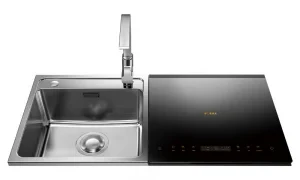Introduction
In demanding industrial applications, the choice of materials and welding techniques is crucial to ensure the integrity and performance of critical components. Hastelloy C276, a nickel-molybdenum-chromium superalloy, is renowned for its exceptional corrosion resistance. When it comes to welding this alloy, the selection of the proper filler wire is of paramount importance. In this comprehensive guide, we will delve into the world of Hastelloy C276 filler wire, exploring its properties, applications, and best practices for successful welding.
Understanding Hastelloy C276
Hastelloy C276 is a member of the Hastelloy family, a group of superalloys known for resisting a wide range of aggressive chemical environments. Critical components of Hastelloy C276 include:
- Nickel (Ni): Provides the alloy’s corrosion resistance and flexibility.
- Molybdenum (Mo): Enhances the alloy’s resistance to pitting and crevice corrosion.
- Chromium (Cr): Contributes to its high-temperature oxidation resistance.
- Tungsten (W): Improves the alloy’s ability to withstand aggressive media.
- Iron (Fe): Serves as a strengthening element.
Hastelloy C276 is often chosen for applications where corrosion resistance is paramount, including chemical processing, pollution control, and waste treatment.
Importance of Filler Wire in Welding
Welding is joining two or more pieces of metal by melting the edges and fusing them. Filler wire plays a critical role in this process. It not only adds material to the weld but also serves as a bridge between the two pieces being joined. The choice of filler wire is essential as it influences the weld’s properties, including strength, corrosion, and heat resistance.
Properties of Hastelloy C276 Filler Wire
Hastelloy C276 filler wire is specifically designed to match the composition and properties of Hastelloy C276 base material. Here are some fundamental properties of Hastelloy C276 filler wire:
- Corrosion Resistance: Like the base material, Hastelloy C276 filler wire exhibits exceptional corrosion resistance. It is highly resistant to various corrosive media, including sulfuric acid, hydrochloric acid, and chlorine gas.
- High-Temperature Resistance: Hastelloy C276 filler wire can withstand high temperatures, making it suitable for applications in elevated-temperature environments.
- Weldability: This filler wire is known for its ease of welding and compatibility with various welding techniques.
- Low Carbon Content: The low carbon content in Hastelloy C276 filler wire minimizes the risk of carbide precipitation, which can lead to intergranular corrosion.
Applications of Hastelloy C276 Filler Wire
Hastelloy C276 filler wire finds application in various industries where corrosion resistance and reliability are paramount. Some notable applications include:
1. Chemical Processing
The chemical industry frequently employs Hastelloy C276 filler wire for welding critical components like pipelines, reaction vessels, and heat exchangers. Its exceptional resistance to corrosive chemicals makes it an ideal choice for handling aggressive acids and alkalis.
2. Pollution Control
In pollution control equipment, such as scrubbers and flue gas desulfurization systems, Hastelloy C276 filler wire is used to join components that come into contact with acidic or corrosive gases. Its corrosion resistance ensures the durability of these systems.
3. Waste Treatment
Waste treatment facilities utilize Hastelloy C276 filler wire in applications like sewage treatment plants and waste incinerators. Its ability to withstand the corrosive byproducts of these processes is essential for its reliable operation.
4. Aerospace
In the aerospace industry, Hastelloy C276 filler wire is employed for welding components used in high-temperature and corrosive environments, such as aircraft engine parts and exhaust systems.
Best Practices for Welding with Hastelloy C276 Filler Wire
Achieving successful welds with Hastelloy C276 filler wire requires careful consideration and adherence to best practices:
1. Base Material Compatibility
Ensure that the base material being welded is Hastelloy C276 or a compatible alloy. The base material and filler wire should have similar chemical compositions for optimal performance.
2. Cleanliness
Before welding, all surfaces should be thoroughly cleaned to remove contaminants, such as oil, grease, or rust, which can lead to defects in the weld.
3. Welding Technique
Hastelloy C276 filler wire is compatible with various welding techniques, including Gas Tungsten Arc Welding (GTAW/TIG), Gas Metal Arc Welding (GMAW/MIG), and Shielded Metal Arc Welding (SMAW). Select the appropriate technique based on the specific requirements of the application.
4. Preheating and Post-Weld Heat Treatment
Preheating and post-weld heat treatment may be necessary for specific applications to relieve residual stresses and prevent the formation of intergranular carbides.
5. Welding Parameters
Optimize welding parameters, such as current, voltage, and travel speed, to achieve a sound and defect-free weld. The exact parameters will depend on the welding technique used.
6. Quality Assurance
Thoroughly inspect the welds by non-destructive testing methods, such as radiographic or ultrasonic testing, to ensure they meet industry standards and specifications.
Conclusion
Hastelloy C276 filler wire is a critical component in welding applications where corrosion resistance and reliability are essential. Its exceptional properties, including corrosion resistance, high-temperature resistance, and ease of weldability, make it an ideal choice for various industries, from chemical processing to aerospace. By following best practices and adhering to cleanliness, base material compatibility, and quality assurance, welders can achieve successful and durable welds with Hastelloy C276 filler wire. Its versatility and performance in aggressive environments continue to





























